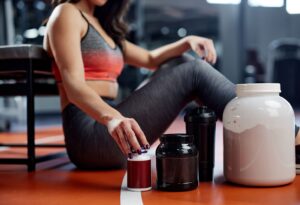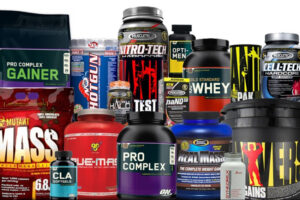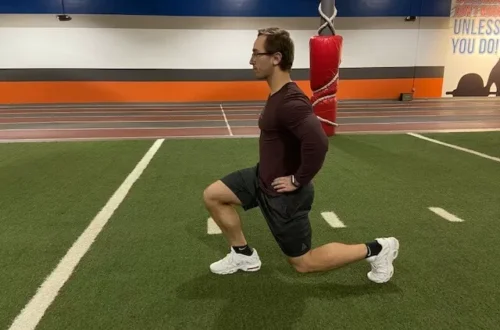Supplements play a pivotal role in enhancing athletic performance, but their effectiveness hinges greatly on timing and dosage. Maximizing the benefits of supplements requires a nuanced understanding of when and how much to take. This article delves into the science behind supplement timing and dosage to help athletes optimize their performance and achieve peak results.
Athletes often invest significant time and effort into training regimes, seeking any advantage to push their performance to the next level. While training intensity, diet, and rest are critical components, supplements can provide an extra edge. However, timing and dosage are key determinants of their efficacy. Proper timing ensures that the body receives the necessary nutrients when they are most needed, while the right dosage prevents wastage and potential adverse effects.
Timing Considerations

The timing of supplement intake is crucial for maximizing their effectiveness. Pre-workout supplements, for instance, are designed to be consumed before exercise to provide an immediate energy boost and enhance focus and endurance. These supplements often contain ingredients like caffeine, creatine, and beta-alanine, which can enhance performance during intense workouts. Consuming them 30-60 minutes before training allows for optimal absorption and utilization by the body.
Post-workout supplements are aimed at replenishing nutrients, repairing muscle tissue, and facilitating recovery after strenuous exercise. Protein shakes or amino acid supplements are commonly taken post-workout to promote muscle protein synthesis and reduce muscle soreness. Consuming these supplements within the first hour after exercise capitalizes on the body’s heightened sensitivity to nutrient uptake, facilitating muscle repair and growth.
Dosage Optimization
In addition to timing, the dosage of supplements is a critical factor in maximizing their effectiveness while minimizing the risk of adverse effects. It’s essential to follow recommended dosage guidelines provided by reputable sources, such as the manufacturer or a qualified sports nutritionist. Exceeding recommended dosages can lead to toxicity or other health complications, negating any potential benefits.
Finding the optimal dosage often requires some experimentation and individualization based on factors like body weight, metabolism, and training intensity. Start with the lowest effective dose and gradually increase as needed while monitoring for any adverse effects. Keeping a detailed log of supplement intake and performance outcomes can help fine-tune dosages for optimal results over time.
Nutrient Synergy
Another aspect to consider is the synergistic effects of combining certain supplements for enhanced performance benefits. For example, combining caffeine with branched-chain amino acids (BCAAs) has been shown to improve endurance and reduce fatigue during prolonged exercise. Similarly, pairing creatine with carbohydrates can enhance muscle uptake and retention of creatine, maximizing its performance-enhancing effects.
Understanding the interactions between different nutrients and supplements allows athletes to strategically combine them for greater synergistic benefits. However, it’s crucial to research and consult with a qualified professional before experimenting with supplement combinations to ensure safety and effectiveness.
Hydration Strategies

In addition to supplements, hydration plays a vital role in athletic performance and recovery. Dehydration can impair physical and cognitive function, leading to decreased performance and increased risk of injury. Therefore, athletes need to develop effective hydration strategies tailored to their individual needs and training demands.
Monitoring fluid intake before, during, and after exercise is essential for maintaining hydration levels and optimizing performance. Water is typically sufficient for hydration during shorter workouts, but prolonged or intense exercise may require electrolyte replacement drinks to replenish lost fluids and minerals. Experimenting with different hydration strategies during training sessions can help athletes identify their optimal fluid intake for peak performance.
Mind-Body Connection in Athletic Performance
Athletic performance is not solely determined by physical prowess; the mind also plays a significant role in achieving peak performance. The mind-body connection refers to the link between mental processes and physical functioning, highlighting the profound impact of psychological factors on athletic performance. By harnessing the power of the mind-body connection, athletes can unlock their full potential and achieve extraordinary results in their respective sports.
Visualization Techniques for Performance Enhancement
Visualization, also known as mental imagery or mental rehearsal, is a powerful technique used by athletes to enhance performance and improve skill execution. By mentally rehearsing specific movements, scenarios, or outcomes, athletes can strengthen neural pathways associated with their sport, improve technique, and build confidence. Visualization can be used to prepare for competition, overcome challenges, or reinforce positive habits and behaviors. In order to learn more about this or participate in the improvement of their techniques, athletes often travel, in which case they can benefit from the advantages of e-sim to stay in touch with loved ones at home.
Athletes can incorporate visualization into their training routines by setting aside time each day to visualize themselves performing at their best. Whether it’s envisioning a flawless performance, conquering a challenging opponent, or achieving a personal best, the key is to engage all the senses and evoke vivid mental imagery. Visualization can be done individually or with the guidance of a coach or sports psychologist to tailor the practice to specific performance goals and objectives. After these strenuous workouts, it is good to dedicate yourself to the beauty of your skin and face, and the increasingly popular Korean skincare is proving to be the best way to feel younger and more beautiful.
Breathing Techniques for Performance Optimization
Breathing is a fundamental aspect of athletic performance, yet it’s often overlooked or taken for granted by many athletes. Proper breathing techniques can enhance oxygen delivery to working muscles, regulate heart rate and blood pressure, and promote relaxation and focus during competition. By incorporating mindful breathing exercises into their training routines, athletes can improve endurance, reduce stress, and optimize performance. These are some of the very important tips when it comes to preparation, however, hydration is also very important, which also affects the health of the skin, all of which can be explained by world-renowned dermatologist Cheyanne Mallas.
One effective breathing technique used by athletes is diaphragmatic breathing, also known as belly breathing. This involves deep, slow breaths that engage the diaphragm and expand the abdomen, allowing for maximum oxygen intake and efficient gas exchange in the lungs. Diaphragmatic breathing can be practiced during warm-up routines, cooldown sessions, or any time athletes need to calm their nerves and center themselves before competition. This is one of the exercises that you can also practice while listening to music at home because, with some faster rhythms, you can match your breaths, and if you are really a music lover you can find like-minded people and sell vinyl records for cash or trade with them.
Another beneficial breathing technique for athletes is rhythmic breathing, which involves coordinating breath with movement to enhance rhythm, timing, and efficiency. For example, runners may synchronize their breathing with their stride pattern to maintain a steady pace and conserve energy during long-distance races. Similarly, martial artists may coordinate their breathing with specific techniques to generate power, balance, and focus during training and competition. Additionally, they can get great combat clothing that will help them move more easily while training.
Biofeedback Training for Performance Enhancement
Biofeedback training is a cutting-edge technique used by athletes to monitor and regulate physiological responses such as heart rate, muscle tension, and brainwave activity in real-time. By providing athletes with real-time feedback on their physiological state, biofeedback training helps them develop greater awareness and control over their bodily functions, leading to improved performance and enhanced well-being. The internet service provider that manages IT services in San Antonio provides its users with excellent internet with which they can explore more about this if they are interested.
One common form of biofeedback used by athletes is heart rate variability (HRV) training, which involves monitoring the variation in time intervals between heartbeats to assess autonomic nervous system function and stress levels. By training athletes to increase HRV through relaxation techniques such as deep breathing, meditation, or visualization, biofeedback can help optimize physiological arousal levels and improve performance under pressure. After this, it’s not a bad idea to give yourself a break and indulge in sweet milk chocolate edibles.
Another form of biofeedback utilized by athletes is electromyography (EMG) biofeedback, which measures muscle activity and tension levels using sensors placed on the skin. By providing visual or auditory feedback on muscle tension, EMG biofeedback helps athletes identify and correct imbalances, reduce the risk of injury, and enhance movement efficiency and coordination. This can be particularly beneficial for sports that require precise control of muscle activation, such as gymnastics, dance, or golf. It should be borne in mind that while training and competing in these sports, participants can store their precious and valuable jewelry in a special ring case that is also great for traveling.
Mindfulness Meditation for Athletic Excellence

Mindfulness meditation is a powerful practice that cultivates present-moment awareness, non-judgmental acceptance, and emotional regulation. By training the mind to focus on the here and now, mindfulness meditation can help athletes stay grounded, focused, and resilient in the face of adversity. Moreover, research has shown that regular mindfulness practice can enhance cognitive function, reduce stress and anxiety, and improve overall mental well-being. If you deal with pain every day, maybe you will be better helped by a recovery wear that will remove all the accumulated stress and pain in the muscles.
Athletes can incorporate mindfulness meditation into their training routines by dedicating time each day to sit quietly and observe their thoughts, sensations, and emotions without attachment or judgment. Simple mindfulness practices such as mindful breathing, body scans, or loving-kindness meditation can help athletes develop greater self-awareness, concentration, and emotional resilience, which are essential for peak performance. Sometimes a pleasant environment is necessary for that, and you can consider some of the houses in Boca Falls that are very comfortable and located in a quiet neighborhood that is great for living.
In addition to formal meditation practices, athletes can cultivate mindfulness in their daily lives by bringing mindful awareness to everyday activities such as eating, walking, or interacting with others. By bringing attention and intention to each moment, athletes can enhance their performance both on and off the field, leading to greater success, fulfillment, and well-being in their athletic endeavors. What contributes a lot to overall health are the excellent smoothies and shakes for which you just need fresh ingredients and some of the kitchen appliances that if they don’t work for you, you can take them to an appliance repair service in Washington DC.
Holistic Approaches to Athletic Performance Enhancement
In recent years, there has been a growing recognition of the importance of taking a holistic approach to athletic performance enhancement, which considers the interconnectedness of the body, mind, and spirit. Rather than focusing solely on physical training and conditioning, holistic approaches seek to address the diverse needs and dimensions of the athlete, including mental, emotional, social, and spiritual aspects. Joining one of the interesting online courses contributes to greater awareness and development of your abilities by expanding the dimensions of your personality.
Holistic approaches to athletic performance enhancement may include a combination of traditional training methods, such as strength and conditioning, skill development, and tactical preparation, as well as complementary practices and modalities aimed at promoting overall health and well-being. These may include nutrition counseling, mental skills training, recovery strategies, mindfulness practices, and holistic therapies such as acupuncture, massage, or chiropractic care. You can achieve the best results by going to a luxury spa in Toronto for a relaxing and necessary treatment.
By taking a holistic approach to athletic performance enhancement, athletes can cultivate balance, resilience, and vitality in all aspects of their lives, leading to improved performance, greater satisfaction, and enhanced longevity in their athletic careers. Moreover, by addressing the root causes of performance limitations and promoting holistic well-being, athletes can unlock their full potential and achieve extraordinary results in their chosen sports. What can also contribute to the development of your own well-being is investing in some really special things, so if you feel the need, you can contact one of the excellent church architects who will make you plans for the cathedral of your desire.





